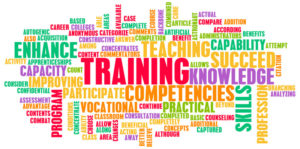 Today I read an excellent article from EdWeek on updating Teacher Preparation Programs to include neuroscience as it’s related to learning and teaching. (link to article from EdWeek) This is something I totally agreed with and stated so in my response to the post. But several hours later, it struck me that in fact, the need for educators to know more about neuroscience and the impact of trauma on the children we teach is what compelled me to start my consulting and training business.
Today I read an excellent article from EdWeek on updating Teacher Preparation Programs to include neuroscience as it’s related to learning and teaching. (link to article from EdWeek) This is something I totally agreed with and stated so in my response to the post. But several hours later, it struck me that in fact, the need for educators to know more about neuroscience and the impact of trauma on the children we teach is what compelled me to start my consulting and training business.
When I first became a principal and got to know the students and their families, I found the difficulties in their lives were heartbreaking. I was fortunate our teachers and our parent-teacher group knew our families and did their best to make every day at school joyful. Our staff worked well together and had a “whole-school” esprit des corps with many instances partnering between grade levels for a learning activity. The social fabric for students was strong because older students mentored younger students. Younger students felt welcome and safe because they knew the bigger kids and everyone knew everyone. This was a school where struggling learners had hope, respect and a strong sense of community and purpose.
At the time, our state produced an annual school performance report that included a category called “similar schools”. The state placed every school in a category based on the school demographics, location type and staffing in order to compare performance between schools across the state. I was eager to learn from other more experienced principals on ways to improve academic growth. My first thought was to compare the results of all the schools in our category, crunch numbers and call the principals of the highest performing schools in my category. Imagine my mingled emotions when I learned my school was the highest ranking school in my category.
The dilemma was now looking at what we were doing right so as not to upset the academic applecart. But I had to also look at things we needed to add or enhance so we could improve. I had to dig into other research from authors Marzano, Jensen and others. I studied the websites of Blue Ribbon Elementary Schools and read their applications and descriptions posted on the U.S. Education website. Despite our limited resources, we were able to provide more social and family events, gained and used technology more effectively in every classroom and enhanced our understanding of poverty with book studies on Dr. Ruby Payne’s work. It was in these discussions that we discovered our assumptions and lack of understanding of the impact on poverty affected our relationships with students and families.
My devoted staff had the desire to investigate ways to improve and as a result, our discussions were heartfelt and productive. Our efforts had a positive impact, evident in our subsequent school performance report. Having a better understanding of poverty and the brain’s natural learning system made instructional techniques and our relationships with students and families better. Best of all, we all realized by changing our perspectives, poverty did not have to be the obstacle we previously thought it was. Kids could learn in spite of poverty when we educators open ourselves to learning what we can do differently to help them learn better.
Statistics became my new friend. I sought out new research and one of my favorite resources were books authored by Dr. Eric Jensen who has a gift in finding and translating new medical and social research into meaningful and practical instructional actions for educators. In other words, Eric tells us what to do to bring the research into teachers’ practice. As I neared retirement, I finally had the opportunity to attend one of his powerful workshops. Within the first hour of the training, I was a changed person. I realized, although I’d be retiring from my service in public education, I would not be retired from improving education until I draw my last breath. The statistics on poverty and childhood trauma shocked me. I went on to complete more than 114 hours of training from Dr. Jensen and pursue further research in childhood trauma. The concerns from our mental health professionals and government organizations on this epidemic of childhood trauma cannot be addressed without better informed educators. Afterall, from September to the end of June, children spend over 1,000 hours with us.
Educators, all of us from pre-k through college instructors, need to sit up and pay attention. Having been a teacher and principal, I know what it’s like. We’re gearing up for a new year. We have lots of preparation and information to familiarize ourselves with prior to and throughout the school year. Information overload can be overwhelming. So who as a full-time educator has time to look at statistics and how does national statistics translate into my school, my classroom? I do get it. But our difficulty learning more is eclipsed by the difficulties our students experience. Our next generation of adults needs us now, to hang in there and learn all we can to teach them the best we can. Our future and theirs depends on the effort we put into meeting their needs. And this is why I created this site to help provide information to educators so they in turn can help our children.
I hope you join me. Thank you.